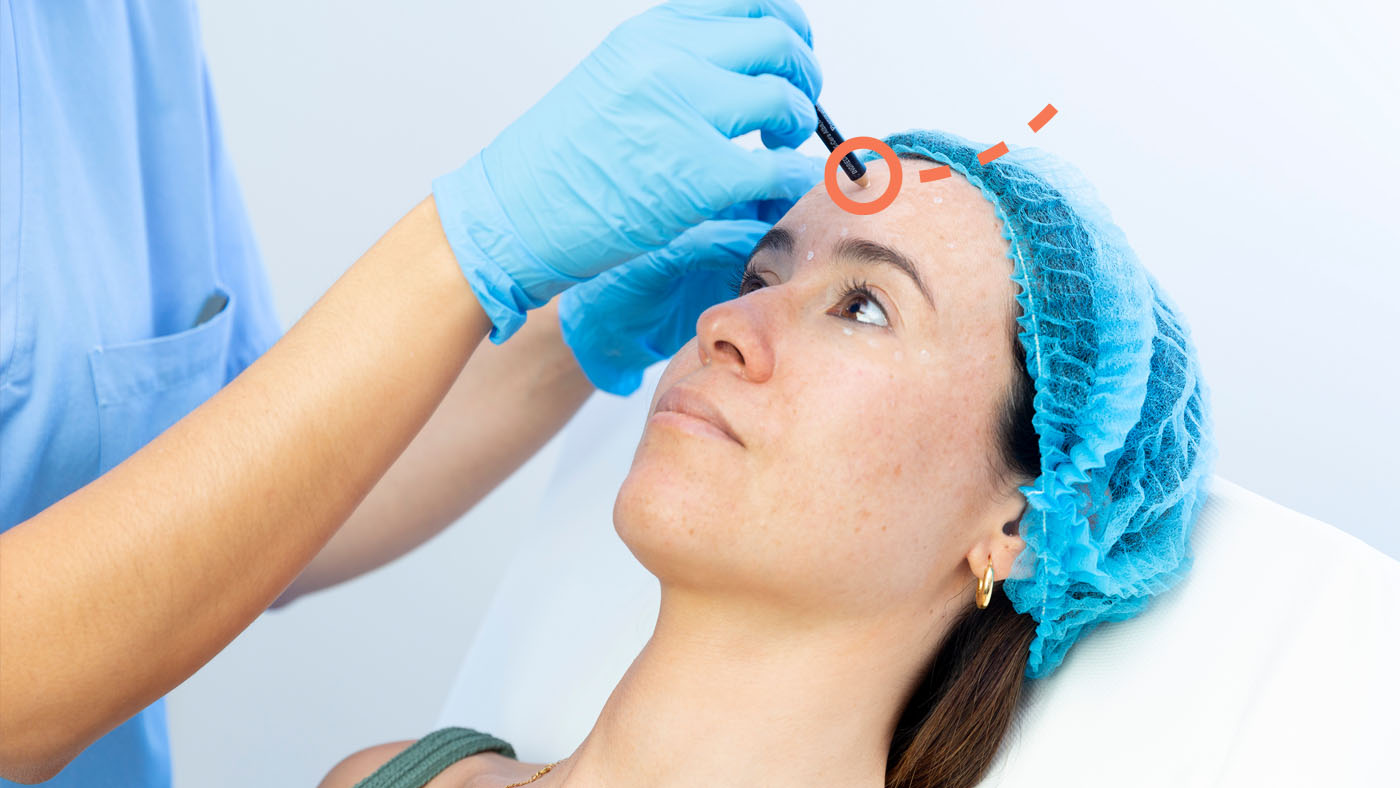Neuromodulators: improve wrinkles without losing expression
20/08/2024

The use of neuromodulators is one of the most popular and effective treatments to combat facial wrinkles for almost twenty years. Treatment consists of infiltrating this substance into the muscle in the area to be treated to temporarily inhibit its movement and produce relaxation. In this way, neuromodulators manage to correct the dynamic wrinkles that appear when these muscles contract.
"Rejuvenate your look without surgery and enhances natural beauty without losing facial dynamism."
These neuromodulators are very comfortable and effective in aesthetic medicine because they manage to attenuate the most severe wrinkles, while providing prevention in younger skin that only has expression lines. These are some of the benefits of neuromodulators:
Neuromodulators injections are a simple, effective and outpatient procedure.
| 1. PRETREATMENT |
|---|
| With the exception of going to the consultation without makeup and with a clean face, no prior special care is required. What is really important is that the patient chooses a reference center where to perform the neuromodulators infiltration and, once there, exposes his concerns and wishes to the doctor in order to meet the patient's expectations. |
| 2. TReatment |
|---|
| The procedure lasts approximately 30 minutes. After applying an aesthetic cream or local cooling, the doctor proceeds with the infiltration of the neuromodulators, which is done with an extremely fine needle, achieving maximum comfort for the patient. Finally, a regenerating cream and sun protection are applied. Botulinum toxin treatment is compatible and can be combined with others such as hyaluronic acid, facial mesotherapy, microneedling, platelet-rich plasma (PRP) and revitalizing peels. |
| 3. POST-TREATMENT |
|---|
|
The appearance of small hives is common in the treated area in the first 6 hours, which will subside little by little. In this period of time it is also advisable to take some precautions such as avoiding playing sports, exposing yourself to the sun, performing facial massages or exposing yourself to extreme temperatures – such as those in saunas or, conversely, staying in places that are too cold. Otherwise, you will be able to carry out your usual activities with complete normality. If necessary, a revision can be carried out to optimize the treatment result after two weeks.. |
| DURAtion: | 30 minutes |
|---|---|
| RESULT: | 3 - 4 days |
| EFECTS: | 4 - 6 months |
| ANaESThESIA: | topical |
The first effects of the neuromodulators appear three or four days after their application, reducing facial wrinkles due to gesticulation in the upper third (forehead, between the eyebrows and eye contour), softening the look and providing a rejuvenated appearance.
The maximum results are usually reached after 15 days, at which time, if necessary, a review will be carried out to optimize the final result.
The most evident muscle relaxation is observed in the first three months or so, although the effects can last up to six months in some patients.
Gradually, these effects diminish until natural expression wrinkles reappear and the patient decides whether to carry out maintenance. Long-term repeated treatment leads to progressive improvements in wrinkle intensity.
Many people show reluctance regarding the infiltration of neuromodulators for fear of losing facial expressiveness and ceasing to recognize themselves. Some patients report fear of exaggerated brow raising or total flattening of the complexion. In order to respect the facial dynamics and the natural beauty of each face, we prefer to initially be prudent in the amount of product and carry out a more accurate follow-up.
When choosing the professional with whom to perform an injected neuromodulator treatment to treat wrinkles in the upper third of the face, we must take into account the delicacy of this area where such important structures as the eyes are located.
There are oculoplastic ophthalmologists who are dedicated solely to the eye orbit –eyelids, lacrimal duct, orbit and eye contour–, also treating aesthetic concerns in this area, but with the added value of knowing in-depth the anatomy of the upper region of the face.
Trust you look to the specialist that knows best
An inadequate technique or an excess in the dose of these neuromodulators can cause muscle paralysis or a diffusion of the product towards an unwanted area, giving way to adverse effects such as drooping of the eyelid, excessive elevation of the eyebrows, excessive tearing. or dry eyes. Oculoplasty specialists modulate the treatment so that the effect is soft and natural.
In this way, the specialization in oculofacial aesthetic medicine places the oculoplastic ophthalmologist in a relevant position when it comes to achieving optimal results in any treatment of the periocular area, but also to prevent complications and detect other conditions, if any, offering the patient a plus of comfort and safety.

In aesthetic medicine, neuromodulators eliminate wrinkles easily and quickly, without complications, without pain and without surgery. Its application provides a precise treatment, rapid action and long-lasting effects on the following signs of facial aging:
Additionally, neuromodulators are used in ophthalmology and many other medical specialties for therapeutic purposes.
Frequently asked questions